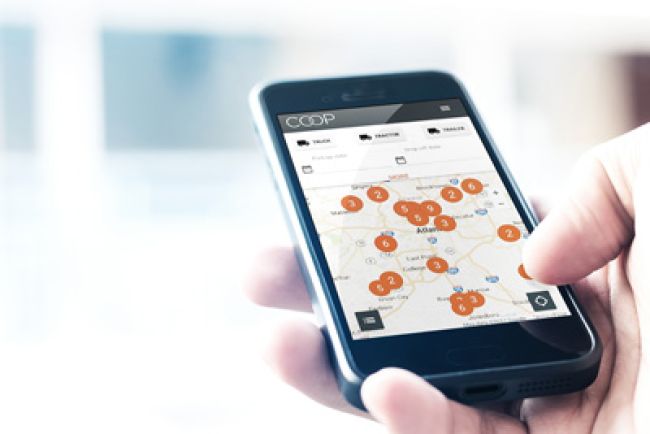
How Technology Can Turn Idle Equipment into Revenue Generators
If you’re like many utility fleet professionals, you’re under increasing pressure from senior management to do more with less. So, when you’re looking for creative ways to squeeze as much productivity and value as possible from your fleet assets, what are your options?
One idea is to put your underutilized or spare vehicles to work as revenue generators by lending them to other fleets that could use them. But how?
There’s an app for that.
Truck rental and leasing giant Ryder (https://ryder.com) recently launched COOP – pronounced “koop” – a commercial vehicle-sharing platform that links fleet owners with idle vehicles to trusted businesses in need of rental vehicles. Think of it as Airbnb for fleet assets, where you’re able to rent out your excess fleet capacity more efficiently and safely to companies that have been vetted by the platform.
The service came out of its pilot phase at the end of the first quarter this year and is live in Atlanta and its surrounding areas in Georgia. The company said that it’s planning to expand to other states beginning in January 2019 but has not yet announced those locations.
So, what types of equipment are on the platform? How does it work? What’s the pricing model? And will asset-sharing technology, like COOP, be useful to utility fleets?
UFP recently spoke with Rich Mohr, vice president and global product manager for Ryder Truck Rental, to get more details. Here are edited highlights from our conversation.
UFP: What types of equipment are available on the platform? Do you only have road vehicles, or is there also off-road and heavy equipment, such as all-terrain utility vehicles, backhoe loaders and excavators?
Rich Mohr: It’s all road equipment right now – from cargo vans and box trucks all the way up to tractors and trailers. We’re looking at offering other types of specialized equipment, such as storage trailers, dump trucks and things like that. But we haven’t had a request for any big specialty providers yet. We will definitely entertain it if the demand is there. It’s an ideal platform for that type of asset-sharing.
What is the onboarding process for both equipment lenders (owners) and borrowers to use the platform? About how long does it take?
The lender onboarding process is easy. Go to https://coop.com and fill out the form letting us know that you’re interested in lending your vehicles on the platform. We’ll call you, get all the information on the vehicles you want to place on the platform and verify your insurance. We’ll then schedule an appointment to walk you through the process for how to post your vehicles with pictures on COOP, or we’ll come out and help post the pictures for you. You’ll get your ID and password, and you’re ready to go the same business day.
For borrowers, it’s a similar process. Sign up on the website. You’ll get a phone call from the COOP customer service center, where they’ll gather information to verify your DOT number and insurance coverage – physical damage and liability. This will usually happen the same business day. And then, once we’ve verified insurance and your DOT number, if you have a good DOT record, we’ll then supply you with an ID and password so you can begin the orientation process.
Are there protection plans for maintenance and physical damage?
The borrower has the option to provide their own physical damage coverage through their insurance carrier or purchase COOP’s supplemental physical damage coverage.
The vehicle lender can either require the borrower to purchase COOP’s physical damage coverage or give the borrower the option to provide their own coverage.
But liability coverage is an absolute requirement to meet our minimum standards. And that protects the borrower and the lender.
What is the pricing model for borrowing the vehicle on the platform? Is it a daily rental fee, a per-mile fee or both?
There’s a daily rental rate and mileage rate. And then there are discounts available on the platform for longer-term rentals.
Who sets the pricing?
Early in our pilot period, we were helping customers set the pricing on their vehicles. And with the latest enhancements on the platform, we’re able to recommend what that piece of equipment should go for on the market. But the lender of the vehicle has ultimate authority to adjust the price up or down depending on their requirements.
As COOP expands beyond Georgia and trucking applications, do you envision this type of asset-sharing technology could be useful in the utility sector?
Yes. There are municipalities, for example, that are trying to keep their fleet as updated as possible, but many of them are strapped for cash. So, they’re looking for options where they can go and acquire equipment to supplement their fleet for the short term and, in some cases, the longer term. And one of the more efficient and affordable ways to get access to that equipment would be to borrow from one of their counterparts in the industry.

